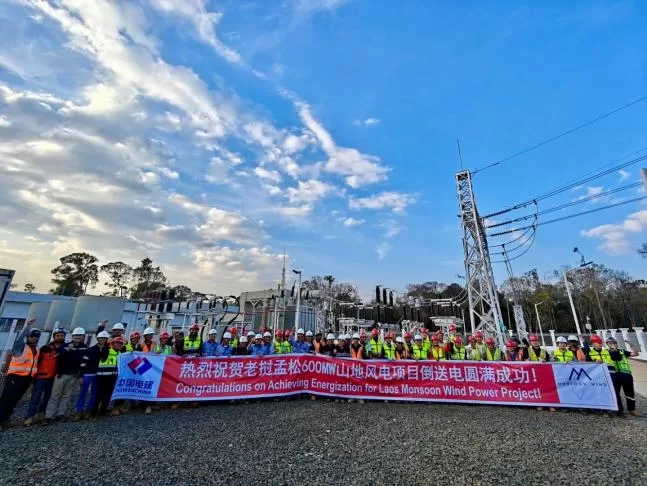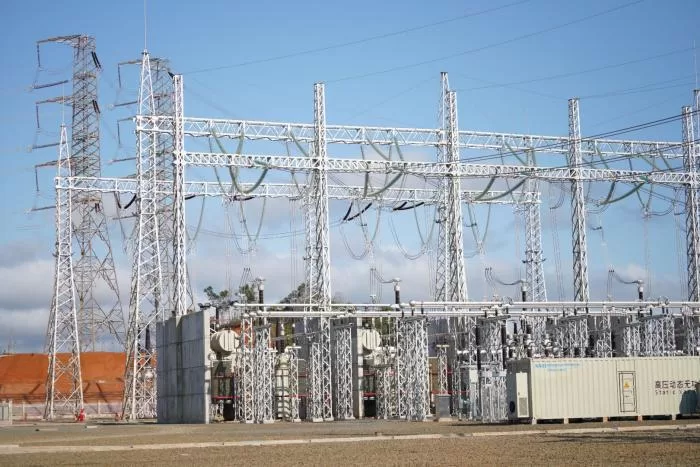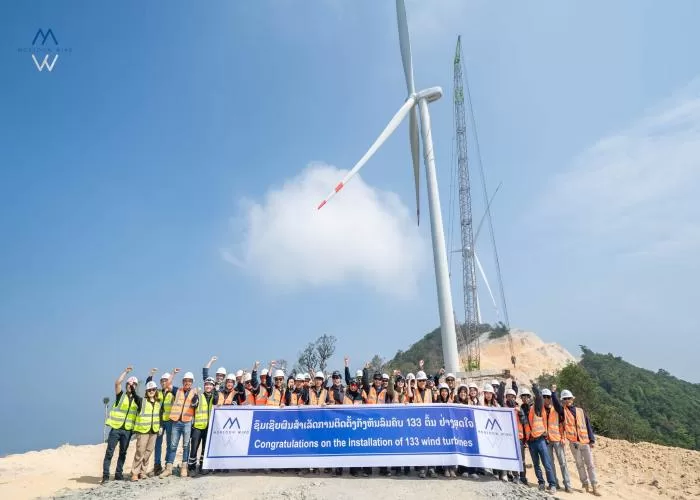Monsoon wind project, the first wind energy project in Laos and the largest wind farm in ASEAN (International organisation of Southeast Asian countries) has completed construction. The 600 MW wind farm with 133 turbines was under ACEN with a 24% stake. Other partners include Mitsubishi Corp and SMP Construction among others.
Project factsheet
Type: Onshore
Location: Sekong and Attapeu provinces, Laos
Developer: Monsoon Wind Power Company
Contractors: ACEN, PowerChina
Other partners: BCPG Public Company Ltd, Impact Electrons Siam Ltd, Mitsubishi Corp, SMP Consultation, STP&I Public Company
Cost: $950 million
Turbine units: 133
Capacity: 600 MW
Carbon emissions avoided: 823,600 MT CO2e
Elevation above sea level: 1,900 meters
Land use area: 250 ha
The Monsoon wind project in Laos
Alongside being the largest wind farm in ASEAN, the Monsoon wind project is also the first cross-border wind project in Southeast Asia. Other than supplying Lao People’s Democratic Republic (Laos), the wind farm will also supply renewable energy to Vietnam.
Constructed at elevations of up to 1,900 meters above sea level, the Monsoon wind project cost $950 million, and has a 823,600 metric tons of carbon emission reduction target once operational. This will be alongside powering close to 300,000 homes with renewable energy.

Energization operations of the Monsoon wind farm will come in 2 phases. First partial commercial operation will be achieved by end of Q2 2025 with a target of 300 MW. The second full commercial operation of 600 MW target will be by Q3 2025.
Cost for the largest wind farm in ASEAN; the Monsoon wind project
As part of the $900 million cost for the project was $692 million. The $692 million nonrecourse project financing agreement for the Monsoon wind project was signed by the Asian Development Bank (ADB) and the Monsoon Wind Power Company. This was in March of 2023. At the time, the financing package was also the largest for a renewable energy project in ASEAN.
The financing sought several avenues including ordinary capital, loans, concessional financing, and a $10 million grant. The inclusion of concessional financing was to “overcome the project’s bankability hurdles to crowd in commercial capital”, as put by ADB.

Monsoon wind project’s strategic decision for cross-border power supply will now also be realized with the completion of the project’s construction. This comes after the completion of installation of the 71 km, 500 kV double-circuit transmission line to Vietnam in February this year. Also commissioned earlier this year were a 500 kV substation and internal transmission systems. Termed as Laos’ “untapped wind resources”, the largest wind farm in ASEAN will well utilize the renewable energy source, and undeniably boost the country’s economy.
The decision to construct the wind farm also seems to be of the idea behind the maximization of natural resources utilization. Laos also generates hydropower. The Monsoon wind project will harness the wind resource during the countercyclic season to the rainy season. This is the solution backing the ingenious idea.
The bigger picture
The project is an important step in solidifying Southeast Asian’s strive for renewable energy and sustainability. The completion of construction at the Monsoon wind project not only speaks of the attainment of investment goals, but also of the fulfillment of commitments to the environment.

